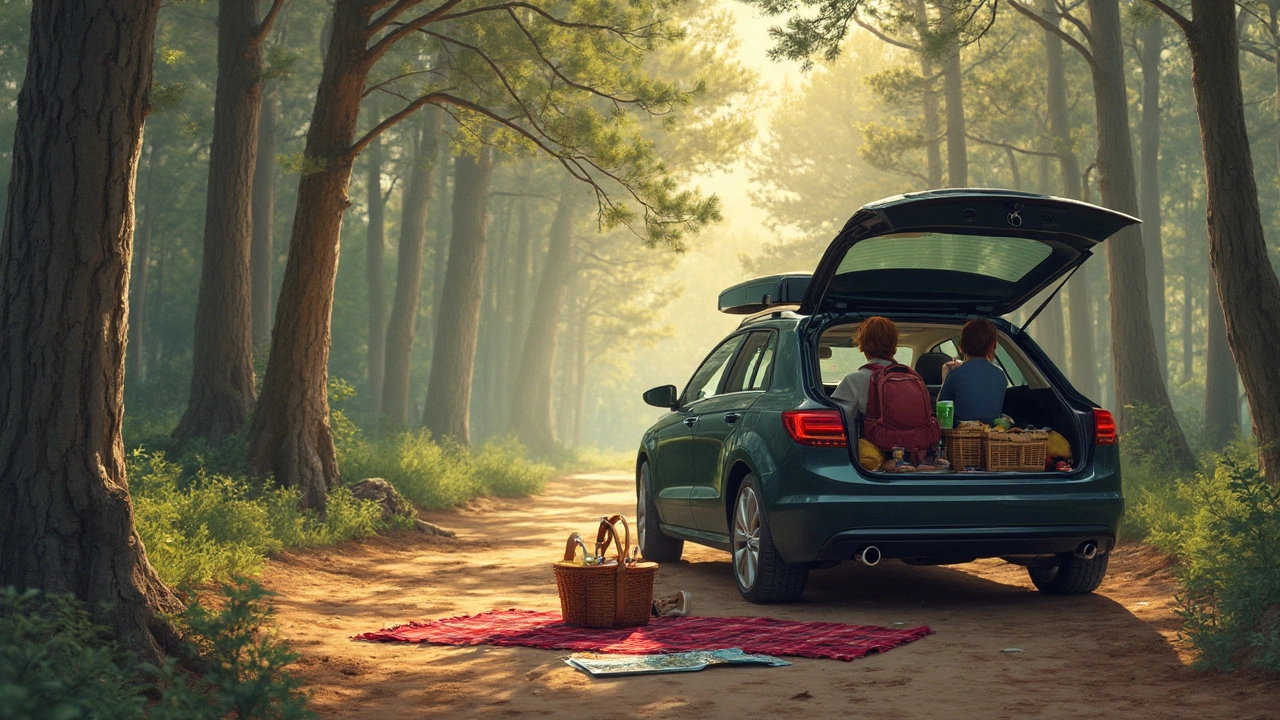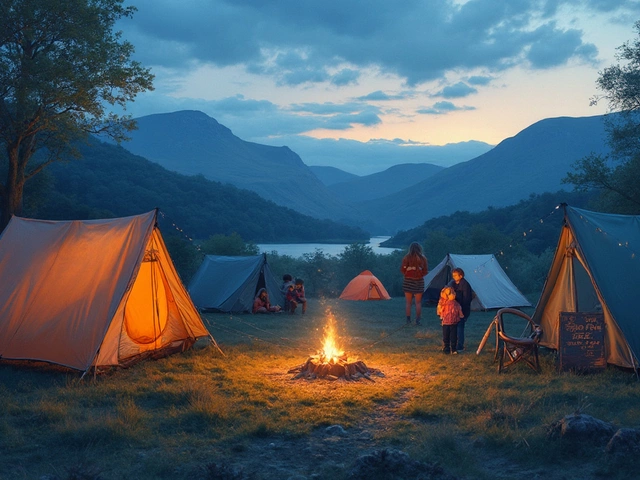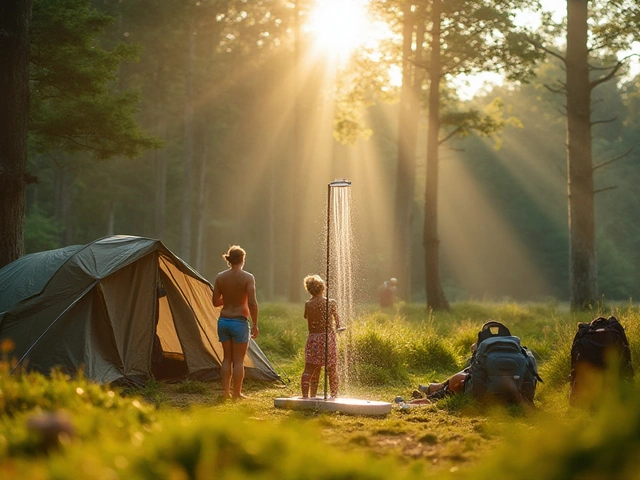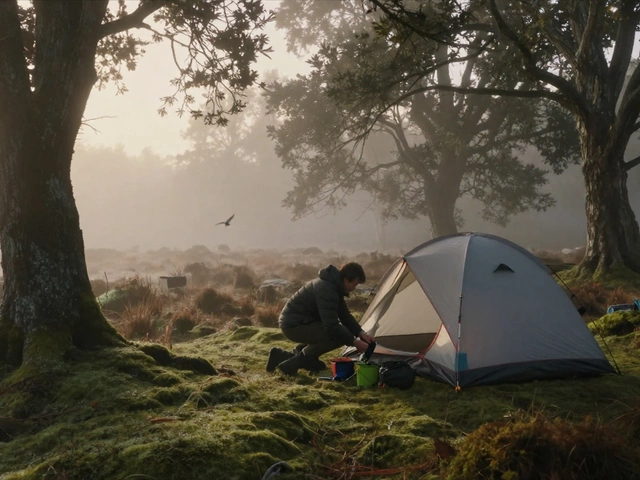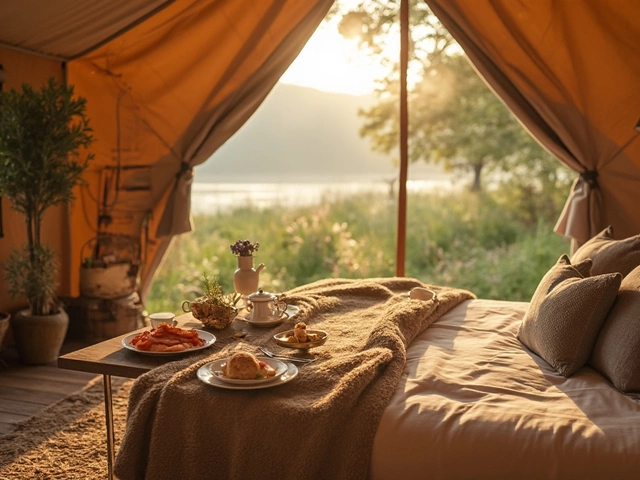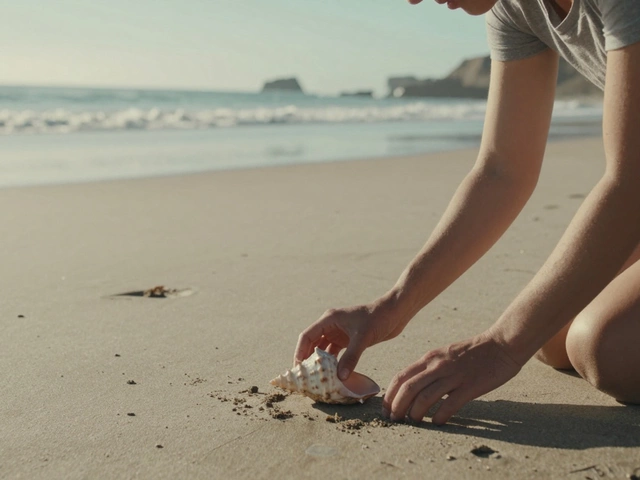Pulled off the main road in Florida and thinking about sleeping in your car overnight? That move can either be completely fine—or get you a rude wake-up call, depending on where you park. Florida isn’t totally clear-cut about where you can crash for the night in your vehicle, especially in forest areas, so it pays to know how the rules work.
Campsites in state forests and national forests usually have their own set of requirements. You can’t just snooze in your car in any empty parking lot, even if it’s surrounded by trees. Most managed forest sites let you camp in your vehicle only if you book a spot or follow posted rules for dispersed camping, and even then, the details can be tricky. Ignoring these can land you with a ticket—or worse, a knock from a ranger in the middle of the night.
So, if you’re thinking about catching some Z's in your car on forest land in Florida, you need to know where it’s actually allowed, how to avoid those awkward run-ins, and the best ways to make your stay safe and low-key. Nobody wants to end a camping trip with a fine.
- Florida’s Laws on Car Camping
- Forest Campsite Rules You Can’t Ignore
- Where You Can Actually Sleep in Your Car
- Tips for Safe and Stress-Free Overnight Car Stays
Florida’s Laws on Car Camping
Trying to figure out if you can sleep in your car overnight in Florida? It gets confusing because there’s no single law that covers every spot, and the details change by city, county, and the type of land you’re parked on. For the most part, Florida doesn’t have a statewide ban on sleeping in your car. But local governments and land managers set their own rules, especially in places like forest campsites and parks.
On public roads, you’ll usually see clear signs if overnight parking isn’t allowed. Although no state law outright bans sleeping in a car, you can’t just park anywhere. City ordinances in spots like Miami or Tampa sometimes ban overnight parking or have time limits. So, you might be fine in a rural area or a forest site, but getting too comfortable in a city lot is risky.
When it comes to Florida forest campsites, the Florida Forest Service and USDA Forest Service oversee most of the land. They actually allow overnight car camping, but only in places designated as campsites or dispersed camping areas. You can’t pull over on a forest road and call it a night anywhere you please. The rangers do make rounds, and you might get a warning or a fine if you’re caught outside the allowed spots.
Check out this quick breakdown of car camping rules across different Florida areas:
| Area Type | Can You Sleep in Your Car? | Notes |
|---|---|---|
| State Forest Campsite | Yes | Must register; use designated spots |
| National Forests (like Ocala) | Yes | Dispersed camping okay, certain areas only |
| City Street or Lot | Usually No | Check local laws |
| Rest Areas | No | Up to 3 hours, but no overnight sleeping |
Always read signage wherever you park, since many Florida forest lands post rules at entrances. If you’re ever unsure, call ahead or check the forest’s website. Quick tip: if a ranger finds you, honesty about your plans can sometimes save you from a fine, but it’s way easier to just follow the posted guidelines from the start.
Forest Campsite Rules You Can’t Ignore
Let’s get straight to it: not every forest site in Florida lets you sleep in your car overnight. A big chunk of state and national forest campsites require you to have a permit, reservation, or at least follow their check-in process. If you skip this, there’s a solid chance you’ll get fined or told to move along in the middle of the night.
In most managed forests, vehicle camping—meaning actually staying in your car instead of a tent—is totally fine if you’re in an official campsite. But “official” matters here. Pulling off down a scenic dirt road and tucking in for the night just because it looks quiet? Not gonna cut it. Rangers actually patrol these areas, and they check permits, especially during busy seasons like spring and fall.
Here’s what you need to know to stay on the safe side:
- Always check for signs or kiosks—they usually have the latest info on rules for overnight parking and camping.
- Snag a permit if it’s required. Some forests use recreation.gov or reserveamerica.com to book spots, even for car camping.
- Follow fire rules. Many campsites ban open flames unless it’s in a provided fire ring. This isn’t just for show—Florida has real wildfire risks in the dry season.
- Keep to designated spots. Parking off-trail or on vegetation is often a no-go and can damage the ecosystem (plus, that’s another fine waiting for you).
- If you’re going for “dispersed camping”—that’s camping outside official sites—the Osceola, Ocala, and Apalachicola National Forests allow it in certain areas, but you’ll still need to register in some districts. Double-check the forest’s website or call their visitor center.
For quick reference, here’s how some popular spots handle overnight car camping:
| Forest | Car Camping Allowed? | Reservation/Permit Needed? |
|---|---|---|
| Ocala National Forest | Yes (in campsites) | Usually (reserve online) |
| Osceola National Forest | Yes (designated + some dispersed) | Depends on area |
| Apalachicola National Forest | Yes (designated + some dispersed) | Check with ranger |
Don’t just wing it—double-check each forest area’s site before heading out. Policies change based on fire risk, hunting season, and local wildlife issues, and sometimes a spot that was fair game last year suddenly isn’t. Staying updated keeps your trip stress-free—and keeps you from getting that dreaded knock on your window at 2 a.m.
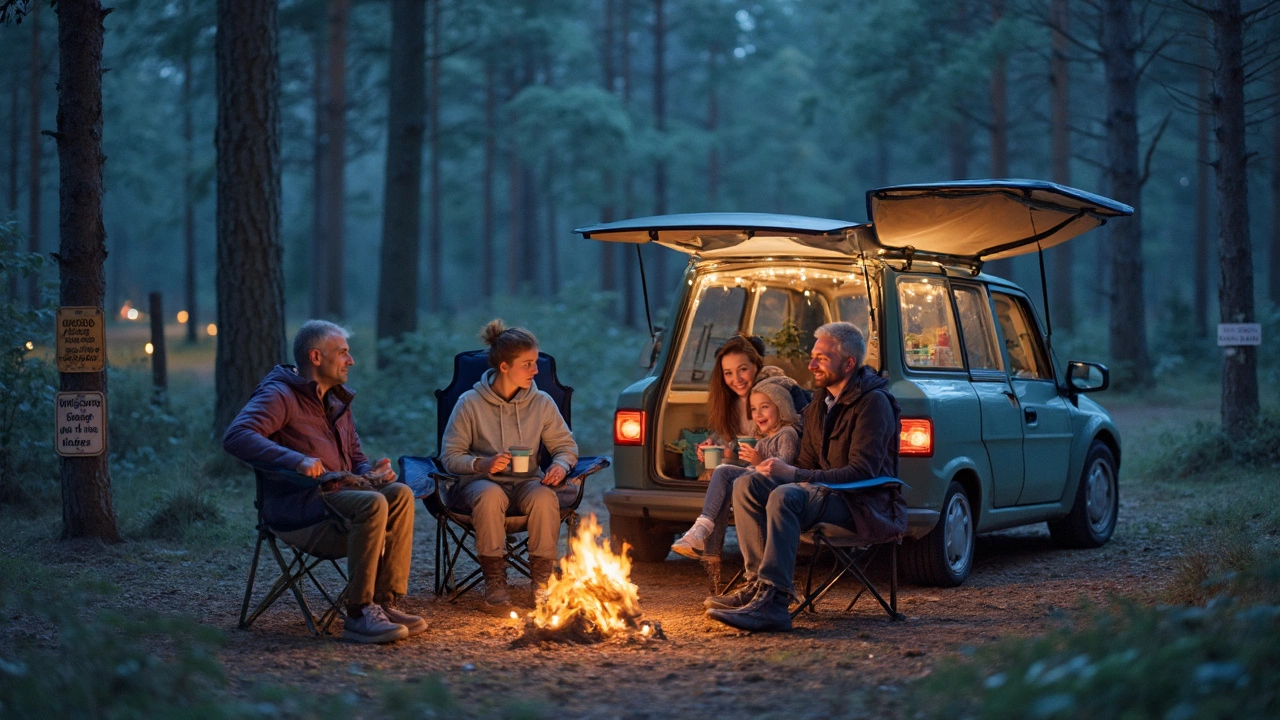
Where You Can Actually Sleep in Your Car
Not every patch of forest or lonely parking spot in Florida welcomes overnight car stays, even if it looks perfect. If you’re serious about catching some rest in your vehicle and staying clear of trouble, you’ve got to know what’s legal.
If you’re after sleep in car options in Florida, the best bet is always managed public land—think forest campsites in national or state forests. Places like Ocala National Forest or Apalachicola National Forest allow overnight stays if you’re parked at a designated campsite. You’ll need to pay the campsite fee and sometimes register ahead, especially in busy spots. These areas have clear rules for car campers, and you’ll find basic facilities like bathrooms and maybe even showers.
Many state forest campgrounds around Florida also allow you to sleep in your car, but they want you to sign up for a spot first. Don’t expect to just pull over on a dirt road and call it a night. Rangers patrol these areas, and they know the difference between a paying camper and a random car. Checking the exact rules is smart—some can get oddly specific, only allowing vehicles in certain spots or during certain seasons.
| Location | Car Camping Allowed? | Notes |
|---|---|---|
| Ocala National Forest | Yes | With campsite or permit |
| Apalachicola National Forest | Yes | Designated areas only |
| State Forest Campgrounds | Yes | Book and pay for a site |
| Highway Rest Stops | No | No overnight stays allowed—strictly enforced |
| Random Roadside or Commercial Parking Lots | No | Considered trespassing or loitering |
Dispersed camping—the kind where you don’t use a formal campsite—can be allowed in some national forests, but this usually means you need to get a permit, follow fire rules, and pick from a list of approved roads. It’s not "sleep wherever you want." Double-check the forest’s website or call ahead before driving there, since these rules change based on wildfires, hunting season, or park maintenance.
Turned away from a forest campsite? Some private campgrounds will let you park your car overnight if you pay, though it’s less scenic and definitely not free. Most Walmart and big box parking lots don’t allow overnight parking anymore in Florida, and police will ask you to move along.
If you find a spot where it’s legal, try to blend in. Park only in the official lot, keep your campsite tidy, and don’t set up a massive camp next to your car. That helps keep car camping welcome for everyone who comes after you.
Tips for Safe and Stress-Free Overnight Car Stays
Sleeping in your car at a Florida forest campsite isn’t just about finding a spot and leaning the seat back. To actually get a full night of sleep and avoid headaches, you need to plan a little and stay smart about it.
- Pick legit sites: Only park at designated camping spots or where forest officers specifically allow overnight parking. In Florida’s Ocala National Forest, for example, dispersed car camping is cool in certain areas—but you’ll need to double check the ranger district’s map and rules.
- Lock up tight: Even out in the woods, people snoop. Make sure your doors are locked and valuables are kept out of sight. It’s pretty rare for theft to happen at forest campsites, but it’s better to play it safe.
- Crack your windows: Just a little airflow makes a huge difference. With Florida humidity and bugs, if you don’t vent your car—even on cool nights—it ends up smelling and gets sticky quick. But use screens to avoid letting mosquitoes join your slumber party.
- Restroom reality: Not every forest spot has a toilet nearby. If you’re at a primitive site, have a plan—a cheap portable toilet, or know how to follow Leave No Trace practices if nature really calls late at night.
- Blend in: Keep a low profile. Don’t pop open a grill or have loud music going after dark. Rangers don’t love a party atmosphere where it’s not allowed. Your neighbors won’t, either.
- Stay safe from wildlife: Florida forests aren’t just for people. Always store food in sealed containers and never leave scraps around, or you might meet raccoons, ants, or even a curious bear. Every year, rangers remove dozens of bears near campsites just because folks get lazy with food storage.
According to the Florida Forest Service, about 30% of forest car campers forget to check weather and end up riding out heavy rain in low-lying parking spots. That’s a bad time. Always park on high ground and bring extra clothes—weather changes fast, especially in summer.
| Problem | Simple Solution |
|---|---|
| Too hot or cold | Use window shades. Keep a blanket handy. |
| Bugs | DIY window screens with mesh and magnets. |
| Loud neighbors | Pack earplugs or a white noise app. |
One last thing: Cell coverage in the woods is spotty. Before you lose service, download maps, campsite info, and any needed trail apps. That way, you’re ready—whether you’re tracking down the last legal sleep in car spot or just finding the main road at sunrise.
